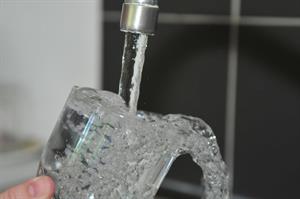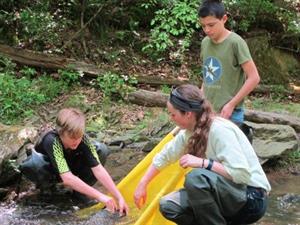Scott Maxham, IWLA Clean Water Fellow
 We all know that water is essential to life, but we often take it for granted. Throughout history, the rise and fall of civilizations has been directly linked to reliable, healthy water supplies. Historians and scientists have hypothesized that lead-contaminated drinking water caused the fall of the Roman Empire. Water treatment plants today are engineered to avoid the same fate. How well are they working? Ask the residents of Flint, Michigan.
We all know that water is essential to life, but we often take it for granted. Throughout history, the rise and fall of civilizations has been directly linked to reliable, healthy water supplies. Historians and scientists have hypothesized that lead-contaminated drinking water caused the fall of the Roman Empire. Water treatment plants today are engineered to avoid the same fate. How well are they working? Ask the residents of Flint, Michigan.
The Environmental Protection Agency (EPA) lists the maximum “acceptable” level of lead in drinking water as 15 parts per billion (ppb). Levels in Flint, Michigan, reached 13,000 ppb. The water coming out of residents’ taps was literally toxic waste.
Safe Sips
Treating water so it’s safe to drink is more complicated than flipping a switch. Water utilities use a multi-step process to remove dirt and dissolved particles from source water, then add disinfectants to kill parasites and germs. Chlorine has been the gold standard for a century, virtually wiping out typhoid and cholera. But chlorine has its down sides: It is unstable, leaving water vulnerable to bacteria after a few days. It can be corrosive to pipes. It also reacts with organic compounds in water, such as leaves or algae, creating dangerous by-products. Many utilities have switched to chloramine – a combination of chlorine and ammonia – which is more stable in water and does not generate dangerous by-products. However, chloramine is even more corrosive to pipes than chlorine.
Corroding pipes leach metal into the water running through them. To prevent this, water providers routinely add orthophosphates to drinking water, creating a protective barrier to pipe corrosion. Utilities must take into account not just the disinfectants added at the water treatment plant. There are often corrosive chemicals in the source water they’re starting with, including chloride.
Chemistry note: Chlorine is a chemical element. Chloride is an ion formed from chlorine. Salts that include chloride ions – such as the salt used for cooking and road salts – are commonly called “chlorides.”
The water crisis in Flint, Michigan, was caused by switching water sources and not adjusting water treatment accordingly. In this case, the utility began drawing water from the Flint River, which contained higher chloride concentrations than the previous water source.
So what is the issue with salt (chloride) in water? At a basic level, we should not be drinking salt water. Low concentrations are below human perception, but if you have high blood pressure, even low levels of salt in your water could pose a health threat. Chlorides occur naturally at low levels. However, excessive amounts of chloride wash into our streams, rivers, and lakes each year from winter road treatments, sewage contamination, and agricultural chemicals, adding to the corrosivity of drinking water. How do we limit our risk of exposure to lead and other contaminants?
Citizen Science Solutions
The 1992 Lead and Copper Rule mandated that lead and copper pipes no longer be used to transport drinking water. However, the law failed to retroactively mandate the replacement of old lead and copper pipes. Major cities have looked into replacing these pipes, and estimates have averaged $400 million and a decade’s worth of work. Because of this high cost – both in money and time – the pipes are often left in place. This is not just a city issue – there is also a chance your home contains lead pipes, an expensive problem to fix.
The Trump Administration is loosening water regulations and attempting to dismiss lead as a harmful neurotoxin. A researcher from Virginia Tech is credited with exposing the issues with Flint’s drinking water. He did this on his own time, with his own money. It is up to citizens like us to document water quality issues to protect ourselves and our communities.
 What can you do? Start by looking at the EPA’s Safe Drinking Water Information System. Looking for more specific results? Consider buying test strips or sending water samples to a laboratory. You can also monitor the streams that supply your drinking water to gauge the overall health of your watershed. Simple chloride test strips can give you a reading of chloride levels in the water. Learn more about stream monitoring on our Save Our Streams web page.
What can you do? Start by looking at the EPA’s Safe Drinking Water Information System. Looking for more specific results? Consider buying test strips or sending water samples to a laboratory. You can also monitor the streams that supply your drinking water to gauge the overall health of your watershed. Simple chloride test strips can give you a reading of chloride levels in the water. Learn more about stream monitoring on our Save Our Streams web page.
Ensuring clean water across America will take commitment from all of us. That’s why the Izaak Walton League launched the Clean Water Challenge. It is a commitment to monitor 100,000 more stream sites by 2022. If we all get our feet wet, we can do it. After all, Rome wasn’t built in a day.
Photo credits: PennState Extension; IWLA